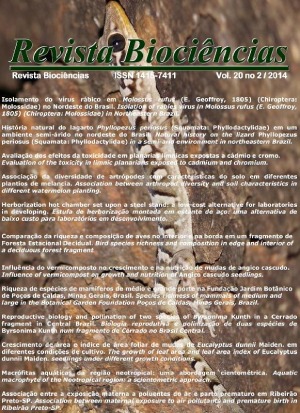Reproductive biology and pollination of two species of Byrsonima Kunth in a Cerrado fragment in Central Brazil
Palavras-chave:
floral biology, oil-producing flowers, bees.Resumo
The flowers of Byrsonima basiloba A. Juss. and Byrsonima intermedia A. Juss. show diurnal anthesis. The stigma receptivity extends for up to three days after anthesis. The pollen is white and powdery, and the viability for B. basiloba pollen is 96.2%, while for B. intermedia, it is 92.9%. In the reproductive system treatments, B. basiloba had 28.9% fruit production in natural conditions and 3.4% in xenogamy. Conversely, B. intermedia had the highest fruit production for xenogamy (36.8%), followed by natural pollination (13.8%). The female bees of the genus Epicharis were the most likely bee genus to collect pollen and oil during the period observed. The bees of the genus Augochloropsis collected only pollen, and Paratetrapedia aff. testacea Smith collected oil in flower buds during the pre-anthesis phase.






